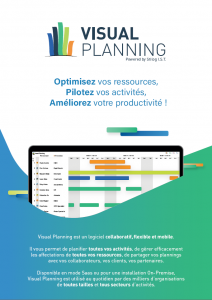The management practices that your office follows can have a huge impact on your success. An efficient, productive doctor’s office generates more revenue while creating greater patient satisfaction, and having a clear and comprehensive process allows your physicians to focus more on patient care and less on operations.
Follow some of the tips below for positive results in your practice.
1. Ensure clinicians are focused on patient care most of the time.

Someone has to order paper for the printers, get on the phone to argue with an insurance company or process payroll. That someone doesn’t have to be — and probably shouldn’t be — a clinician. Even doctors who own and run their own clinics or offices typically rely on office managers or another delegate to shepherd administrative tasks, and for good reason. The more patients a clinician has time to see, the more revenue an office can create.
Best practices for doctors’ offices and other medical practices tend to be a separation of duties between clinical and administrative. Commonly, offices are split into three core functioning units:
- Front office. Reception, intake or admissions — whatever you call it — these are the teams that help the patient first. They set appointments, answer phones, greet patients, gather and update information and, in some cases, conduct insurance verifications or collect copayments.
- Clinical. Doctors, nurses, physical therapists and others — these are the individuals involved in evaluating, diagnosing and treating the patient.
- Back office. Claims filling, billing and coding — the back-office staff usually handles everything that comes after the appointment to ensure the practice gets paid.
2. Conduct insurance verifications before patients receive services.

Claims denials are frustrating — they delay cash flow and require intervention, increasing labor costs. But they’re even more frustrating when a simple process could have prevented them. Taking the time to call an insurance company or use an online system to verify a patient’s coverage improves the chances of a satisfactory outcome for everyone.
This lets you know whether the patient’s coverage is still in force. That reduces denials for lack of coverage. You can also find out if the patient has met a deductible, what the copay is and whether insurance will cover certain treatments. That way, someone can discuss cost expectations with the patient to avoid confusion or surprises down the road.
3. Send appointment reminders and confirm appointments with patients.

No-shows are bad for medical practice bottom lines. They leave your clinical resources idle at the last minute, usually with little chance to fill in the time with another patient. You’re still paying those clinicians, so you’re out money as well as time.
Sending appointment reminders or confirming appointments with texts, emails or voice calls can reduce the rate of no-shows by around 66%. That’s a huge win considering appointment reminders can be automated as long as you’re using a scheduling solution that allows it.
4. Collect appropriate copays from patients at the time of service.

Around 23 million people — or 10% of adults — in America owe some amount of medical debt. More than half of all debt that goes to collections involves medical bills.
Ensuring patients know what they might owe is a good first step to avoiding the need to chase down payments or send accounts to collections later. But doctors’ offices should also collect copays at the time of service to avoid adding to future bills (and creating a need to bill the patient later).
Consider implementing numerous payment methods in your office to help ensure patients can make those payments. Options might include:
- Cash, check and credit card. Take all the traditional contenders in your office.
- Online payments. Let patients log in to patient portals to make payments before or after appointments.
- Other payments. Let patients pay with PayPal, Apple Wallet or other digital payment methods to increase the chances they can make a payment at the time of service.
- Payment arrangements. Create a plan that lets patients break larger bills into a few payments over weeks or months to reduce the chance that bills go to collections.
5. Understand trends in your patient census.

Keep track of your patient census so you can look for trends that might inform staffing, scheduling or other business processes. While you can manually record census data, the best way to capture it is with automation. Use apps or other tools to scrape your scheduling, coding and billing software to determine:
- How many patients were seen in a day
- Which providers saw patients and how many each person saw
- What categories of patients or conditions were treated
- What treatments were provided
Capturing this information on a daily basis lets you create a data story that demonstrates patterns and trends. You might see that you always see more patients on Fridays because people schedule future appointments on Fridays knowing they can take off work for a long weekend. Or you may realize that your patient loads on Mondays tend to involve more serious cases — possibly because people wait over the weekend before getting in to see a doctor. Those types of insights let you schedule the right number of employees each day or ensure you’re allowing room in the schedule for lengthier appointments when necessary.
6. Use grouping to create more productivity.

Whenever possible, group like tasks to create efficiencies in your practice. For example, claims billing staff might work their way through all the claims for a specific insurance company before switching to another payer. Because the claims for an insurance company all follow the same rules, that lets staff work more quickly through claims and reduces the chance for errors.
A common grouping scenario for doctor’s offices is vaccine clinics. An office might schedule patients who only need flu vaccines on Tuesday morning. These appointments are short and fast; when you know everyone walking in is there for a flu vaccine, you can deliver the service quickly without normal diagnostic processes. That results in providing more flu vaccines in a day than you would if you slot those patients in with other appointments.
7. Automate routine or basic non-clinical tasks.

Cut down on workloads in busy doctor’s offices by automating routine tasks. Integrate your patient scheduling software with communication apps to send automated appointment reminders. Or, rely on employee scheduling software to create nurse schedules to ensure staff with the right level of experience and credentials are on the schedule when you need them.
Using the right tech tools can help you effectively manage medical practices. Find out whether Visual Planning offers the tools that are right for you by booking a demo today.
Manale is passionate about digital marketing. She joined STILOG I.S.T in 2018.
She brings SEO & SEA expertise, email marketing and creative content marketing to create a great brand experience for Visual Planning customers.



